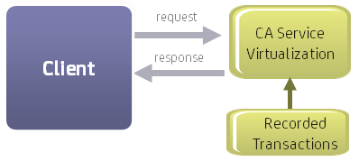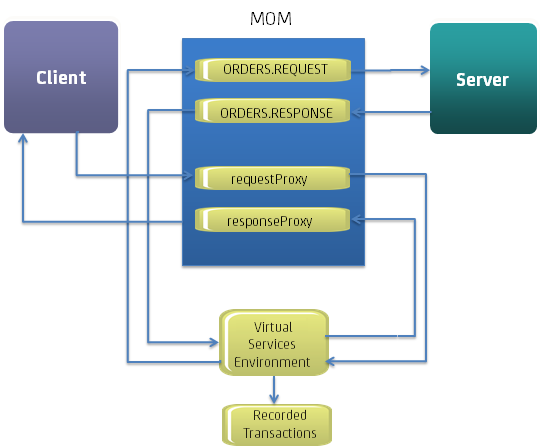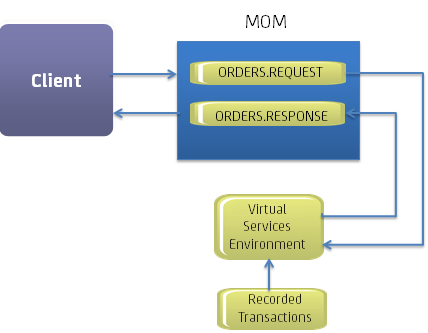

The high-level steps in CA Service Virtualization are:
The following graphics show that when recording the image, VSE acts as the pass through mechanism between the client and server. While VSE passes the requests and responses along, it records the transactions.
Normal Operation

Recording

At the time of virtualization, in the absence of the server, VSE responds to the client requests by consulting the recorded transactions.

Message-oriented middleware (MOM), or messaging systems, are services that provide a means to enable asynchronous communication between two or more software applications. This communication always happens in the form of messages. The messages are posted to message destinations configured in the MOM.
The types of message destinations are:
A publisher adds a message to the queue, and a subscriber pulls messages from the queue, in a "first in, first out" fashion.
A publisher publishes a message to a topic, and all subscribers that subscribe to the topic receive the message.
The following graphic shows a simple message-based service. In this scenario, the client adds messages to a queue (ORDERS.REQUEST), which the server picks up. The response from the server is in the form of messages added to another queue (ORDERS.RESPONSE). The client then picks them up.

Possible variations include:
CA Service Virtualization aims to virtualize the server. In the recording mode, VSE requires extra proxy destinations (requestProxy and responseProxy queues in the following graphic) that the client uses instead of their counterparts. The server still listens and posts to the real destinations. VSE acts as a pass through between these proxy and real destinations. VSE records the traffic to create the VSM and the service image that it needs for the virtualization.

Later, when VSE virtualizes the server, it works with the real destinations. VSE does not need the proxy destinations.

|
Copyright © 2014 CA Technologies.
All rights reserved.
|
|